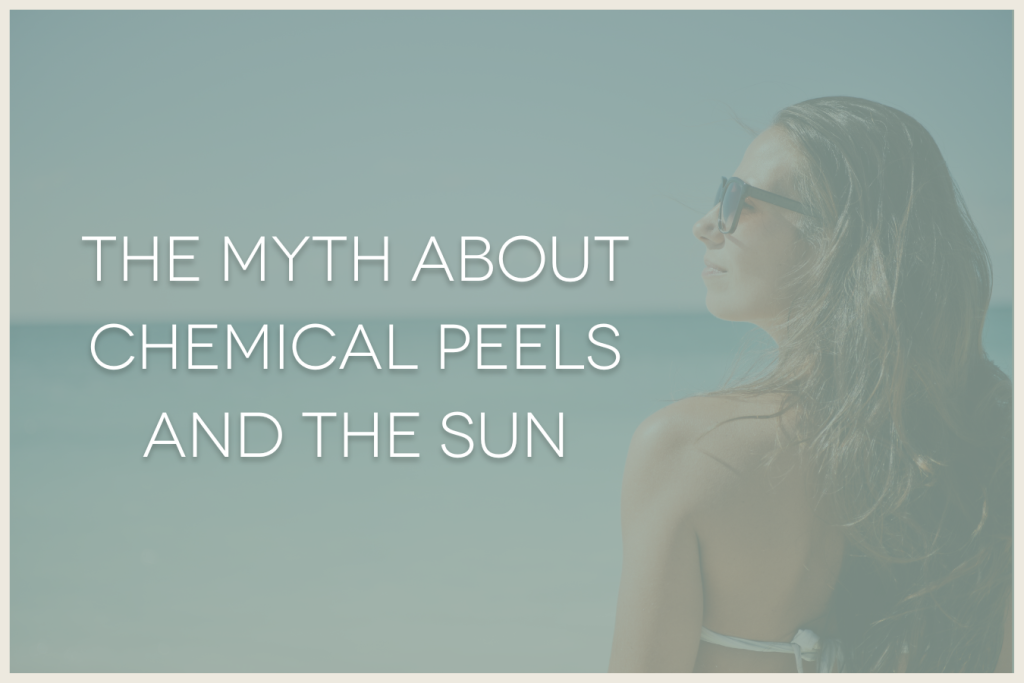-by Karen Bratcher, Licensed Esthetician
Most commonly, we think about wearing sunscreen during the summer, when the sun is brighter and the temperatures are warmer, but in reality, it should be worn year-round. Let’s break down who should use it, why we use it, how it protects us, and how it should be used.
Who Should Wear Sunscreen?
This is a trick question and the answer is: everyone, including children over 6 months! Babies under the age of 6 months are the only exceptions due to their highly sensitive skin. Staying out of the sun, seeking shaded areas, and wearing sun-protective clothing are the best ways to protect those under 6 months.
Why Should I Wear Sunscreen?
Because skin cancer is the most common cancer in the United States and worldwide.
- 1 in 5 Americans will develop skin cancer by the age of 70.
- More than 2 people die of skin cancer in the U.S. every hour.
- Having 5 or more sunburns doubles your risk for melanoma.
- When detected early, the 5-year survival rate for melanoma is 99 percent.
Wait! How does the sun damage my skin? Read on!
What’s The Difference Between UVA and UVB Rays?
Ultraviolet radiation causes DNA changes in the skin that can lead to premature aging and skin cancer. There are two types of UV light: UVA and UVB.
These two types of UV light are proven to contribute to the risk for skin cancer:
- Ultraviolet A (UVA) has a longer wavelength and is associated with skin aging.
- Ultraviolet B (UVB) has a shorter wavelength and is associated with skin burning.
How Does Sunscreen Protect Us?
What does SPF stand for?
SPF stands for Sun Protection Factor. The number tells you how long the sun’s UVB would take to redden your skin if you apply the sunscreen exactly as directed compared to the amount of time without sunscreen. In other words, if you use SPF 30 according to directions, it would take you 30 times longer to burn than if you used no sunscreen.
Convinced yet?
What Type of Sunscreen Should I Use?
What are physical and chemical sunscreens?
Physical (mineral) sunscreen ingredients (including the minerals titanium dioxide and zinc oxide) block and scatter the rays before they penetrate your skin. This protects us from UVA and UVB.
Chemical sunscreen ingredients (like octocrylene and octisalate) absorb UV rays before they can damage your skin. This protects us from UVB.
How Much Should I Apply?
Face: Nickle-sized amount
Body: 1 ounce or 2 tablespoons
Sunscreen needs to be applied every 2 hours, or more frequently after swimming or perspiring.
Wow, that’s a lot of information to absorb! Now that you know the importance of sunscreen, are you ready to find the best way to protect your skin from future damage as well as correct past damage? For a full skin analysis with one of our estheticians, please feel free to book an appointment now. Alternatively, you can contact us or call (585) 244-1010 if you have any questions.
Reference: Skin Cancer Foundation






Leave a Reply